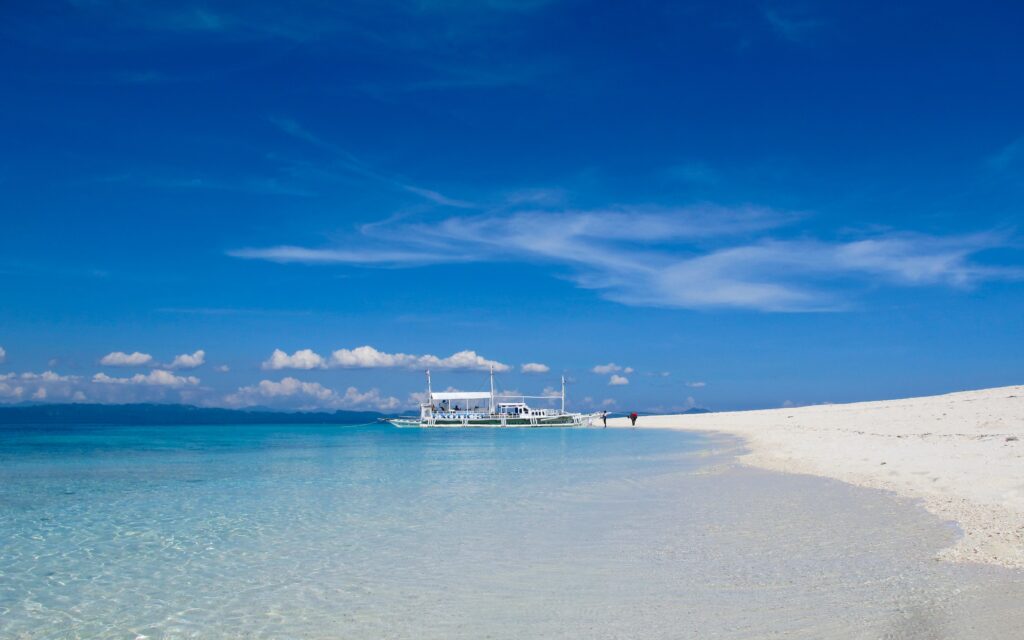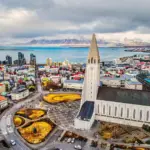
Introduction
The Philippines, a stunningly beautiful archipelago located in Southeast Asia, is an exotic travel destination that captivates and enchants travelers from all over the world. With its paradisiacal beaches, stunning landscapes, and rich cultural diversity, this country offers a unique and unforgettable experience for those seeking adventure and discovery.
The fascinating cultural diversity
The Philippines is known for its incredible cultural diversity. With over 7,000 islands inhabited by a population made up of around 100 different ethnic groups, each region of the country has its own distinctive cultural identity.
From the indigenous traditions of the mountain people to the Spanish influence in colonial cities, every visit to the Philippines is an immersion into a fascinating multicultural mosaic. Furthermore, Filipinos are renowned for their warm and friendly hospitality.
Travelers have the unique opportunity to engage with local communities and learn about their traditional customs, authentic cuisine, and vibrant festivities. This enriching cultural exchange allows visitors to experience the true essence of the Filipino people.
Paradisiacal beaches and stunning landscapes
Located in the western Pacific Ocean, the Philippines is blessed with some of the most spectacular beaches in the world. With their crystal-clear waters, white sand, and lush palm trees, Philippine beaches offer the perfect getaway to relax and enjoy the unspoiled natural beauty.
Besides its stunning beaches, the country is also known for its stunning landscapes. From mountains covered in lush vegetation to imposing rock formations like the Northern Cordillera Rice Fields, the Philippines offers a staggering variety of truly awe-inspiring scenery.
In short, the Philippines is a destination that combines wealth cultural with a beauty unparalleled natural beauty. Be it exploring its underwater treasures whether diving or simply admiring its spectacular sunsets on idyllic beaches, this country promises to provide memorable experiences and moments of deep contemplation.

The Cost of Traveling to the Philippines: An Overview
Factors Affecting Travel Costs
Traveling to the Philippines involves a number of factors that affect the travel costs. The season in which you visit the country is one of the main determinants of prices. During peak season, which generally runs from December to April, prices tend to be higher., as this is when many tourists visit the country in search of the sunny weather and stunning beaches.
On the other hand, During the low season, between May and November, prices can be more affordable. The length of your stay also influences prices. travel costs.
The longer you stay in the Philippines, the greater the impact on your overall budget. It's important to carefully consider how many days or weeks you want to spend in the country to plan your spending accordingly.
Another crucial factor is the traveler's lifestyle. Whether you prefer to stay in luxurious resorts or high-end boutique hotels, dine in fine restaurants, and participate in exclusive activities like... coral reef diving or private tours of paradise islands, expect to spend more money than someone with a more budget-friendly lifestyle.
Local Currency and Exchange Rate
The official currency of the Philippines is the Philippine Peso (PHP). plan your trip for the Philippines, it is essential to understand the exchange rate against major international currencies, such as the US dollar, euro, or pound sterling. This will help you get a clear idea of how much money you'll need to cover your expenses during your stay in the country.
Exchange rates can fluctuate over time, so it's recommended to check the latest exchange rates before making any conversions. You can usually exchange foreign currency at local banks or authorized exchange bureaus.
Additionally, many establishments in tourist areas also accept payments in foreign currency, particularly US dollars. Also, remember to consider possible fees and commissions charged by financial institutions when making foreign exchange transactions.
In some cases, it may be more advantageous to withdraw money from local ATMs using an international debit card. By understanding the factors that affect costs and the local currency, you'll be better prepared to plan your budget and enjoy your trip to the Philippines without any unpleasant financial surprises.
Flight Options to the Philippines
Traveling to the Philippines can be done via a variety of flight options, whether direct or with connections. For those wishing to arrive directly to the country, several airlines offer international flights to major Philippine airports.
Among the most popular options are:
- Philippine Airlines: The national airline of the Philippines, known for providing a comfortable flight experience and high-quality service, operates direct flights from major cities around the world.
- Cebu Pacific: A Philippine airline of low cost Offering a wide network of international and domestic routes, it's a popular option for travelers seeking more affordable fares without sacrificing comfort.
- Etihad Airways: Based in the United Arab Emirates, Etihad Airways is known for connecting several cities around the world to the Philippines through its hub in Abu Dhabi. It's a convenient choice for those looking for efficient connections.
Which Brazilian airlines operate to the Philippines?
- Currently, there are no Brazilian airlines operating direct flights to the Philippines.
- However, it is possible to find flights with one or more stops on airlines such as Emirates, Ethiopian Airlines, Qatar Airways and Turkish Airlines.
- The list of airlines operating in the world includes some Philippine airlines such as Air Philippines, Asian Spirit, Cebu Pacific and Philippine Airlines
What are the layover options to get to the Philippines?
- To get to the Philippines, you need to make stops in other countries, as there are no direct flights from Brazil to the Philippines.
- Most international flights carrives at Terminal 1 of Ninoy Aquino International Airport in Manila, but there is also the Terminal 2, which is used exclusively by Philippine Airlines and PAL Express.
- Additionally, it is possible to travel between the islands of the Philippines by plane, ferry or bangka.
- Some of the airlines that offer flights to the Philippines include Emirates, Ethiopian Airlines, Qatar Airways, and Turkish Airlines.
- Routes and stopovers vary depending on the airline chosen and the departure city.
Internal Transportation in the Philippines
When arriving in the Philippines, it's important to understand the country's internal transportation options, as this will influence travel costs. The main options include:
- Bus: Buses are widely used in the Philippines for long-distance travel. There are different classes of buses available, from the most basic to the executive, with prices varying depending on the comfort offered.
- Taxis: Taxis are quite common in Philippine cities and can be a convenient way to get around. It's important to make sure the meter is working and ask the driver to use it to avoid unpleasant surprises at the end of the ride.
- Tricycles: A unique and typical option in the Philippines are tricycles, three-wheeled motorized vehicles that function as local taxis. They typically operate on short routes within cities or towns, providing an authentic experience for travelers.
The cost of traveling to the Philippines can vary depending on several factors., such as the time of year, length of stay, type of accommodation, and planned activities. Here are some estimates of the cost of traveling to the Philippines:
- Flights: Flights to the Philippines can be found from around R$ 1800.
- Accommodation: The cost of accommodation may vary depending on the type of accommodation chosen.
- According to one source, the cost of accommodation for a trip to the Philippines was PHP 33,089 (US$ 641.26).
- Food: The cost of food in the Philippines can be relatively cheap, with fast food options costing around 30-40 pesos (US$0.7).
- Transport: Transportation costs may vary depending on the mode of transportation chosen. According to one source, transportation costs for a trip to the Philippines were PHP 50,697 (US$$ 982.50).
- Activities: The cost of activities may vary depending on the type of activities planned.
- Overall, the cost of traveling to the Philippines can be relatively affordable, especially when considering the Philippine peso exchange rate to other currencies.
- However, it's important to plan ahead and research the costs of specific activities and accommodations to get a more accurate estimate of the total cost of your trip.

Accommodation: Find the Perfect Getaway in the Philippines
When planning a trip to the Philippines, accommodations play a crucial role in the traveler's overall experience. Fortunately, there are a variety of options available to suit all tastes and budgets. From luxurious beachfront resorts to budget-friendly hostels and family-run guesthouses, there's something for every type of traveler.
For those seeking a luxurious stay, you can find stunning resorts in popular Boracay Islands, Palawan and Cebu. These resorts offer elegant accommodations with panoramic ocean views, infinity pools, and impeccable service.
Prices vary depending on location and season, but expect a larger investment to enjoy these exclusive experiences. On the other hand, if you're traveling on a tighter budget or prefer a more authentic approach, considering staying in hostels or guesthouses may be a better option.
Many of these accommodations offer shared or private rooms at affordable prices. Plus, it's a great opportunity to meet other travelers and share tips on the best places to visit.
Conclusion: Explore the Charm of the Philippines Without Breaking Your Budget
When considering how much does it cost When traveling to the Philippines, it's essential to consider all financial aspects, including accommodations, transportation, food, and activities. However, it's important to emphasize that even on a limited budget, it's possible to experience this country's stunning beauty.
Planning ahead, researching the best accommodation options, and taking advantage of promotions and discounts are valuable strategies for saving money while traveling. Additionally, opting for more authentic experiences, such as staying in local guesthouses or sampling delicious Filipino street food, can provide a rich cultural immersion without breaking the bank.
So, if you're dreaming of sparkling white sand beaches, crystal-clear waters, and a vibrant, welcoming culture in the Philippines, know that there are affordable ways to make that dream a reality. With careful planning and smart choices during your stay in the Philippines, you can create unforgettable memories without breaking the bank.
Lucas Wanderlust has a tireless spirit of adventure, always seeking new travel experiences. Fascinated by the world and the possibility of exploring unknown destinations, he fell in love with the sense of freedom and self-discovery that traveling alone provides. With a backpack on his back and a heart open to the unknown, Lucas embarks on exciting journeys, where each destination becomes a unique chapter in his life story. He gives himself body and soul to the magic of solo travel, inspiring others to follow in his footsteps and discover themselves through adventure.







